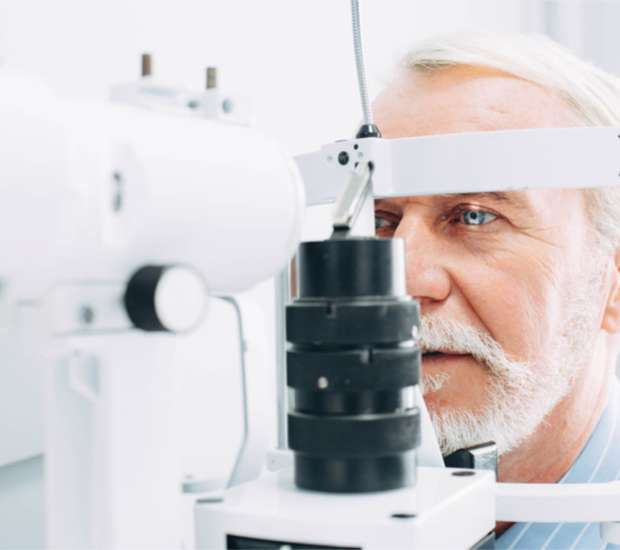Diabetic Eye ExamDallas, TX
While most people receive an eye exam at least once every one or two years, people with diabetes are at a higher risk of vision issues and other eye health problems. While there are a variety of vision issues that anyone can contract, people with diabetes have a higher likelihood of contracting specific ones. People may not realize that diabetes affects many aspects of the body in unique ways.
Benefits of a Diabetic Eye Exam
One such way is in altering the structure of the small blood vessels in the eyes and their function. This can cause issues that hinder one’s quality of vision or worse. With that in mind, a diabetic eye exam at Texas Optical, at least once a month can help to detect any vision issues. The sooner we begin treatment, the better chance we have of preventing the worst of a condition.
If you have diabetes and need an eye exam, call us and schedule an appointment at Texas Optical today.
Diabetes can impact one’s blood sugar, which can damage the walls of small blood vessels. This can alter the structure and function of the blood vessels and cause them to:
- Leak
- Develop clots
- Grow microaneurysms
- Close off
- Accumulate fluid and cause macular edema
With annual diabetic eye exams, we can help detect these issues as early as possible and begin treatment to prevent the issues. The main condition that people need to watch out for is diabetic retinopathy. This condition is much more common in patients with diabetes as an existing condition. Benefits of seeking a diabetic eye exam at our practice include:
- Early detection of diabetic retinopathy or other conditions
- Customized treatment for the patient’s needs
- Regular checkups on the patient’s condition
- Professional medical advice from optometrists who know your medical needs
With this exam, we can continue to monitor a patient’s eyes in order to help prevent any issues that may occur.
What to Expect During the Exam
After scheduling an appointment, we will go over the patient’s medical history and current condition. If the patient has a family history of diabetes or vision issues, we need to know. During the appointment, we will go over any symptoms the patient is having, such as:
- Altered color vision
- Difficulty focusing
- Partial or full loss of vision
- Blurry vision
- Fluctuating vision changes
- Floaters, dots or dark strings in one’s field of vision
- Dark or empty areas in vision
These symptoms can occur gradually or over time. In other cases, patients will have diabetic retinopathy but not display the symptoms right away. This is why seeking regular eye exams is crucial in preventing and treating this condition. During the exam, we will have patients read an eye chart before we examine the retinas directly using an ophthalmoscope.
To get a more enhanced and detailed look into the eye, we may administer drops the dilate the pupils and then use special lenses and light to view the pupils. We may also place a yellow dye into one retina before taking a photo in order to clearly see the blood vessels. The test we choose will vary per the patient’s overall condition.
Treatment Options
The treatment options that we recommend will greatly vary on the patient’s overall needs. We may recommend laser treatment such as focal laser treatment. This type of treatment is the main choice for patients with advanced diabetic retinopathy. This laser treatment will stop or slow the leakage from the blood vessels while stopping other symptoms and even reversing them in some cases.
Another treatment known as scatter laser treatment involves shrinking the abnormal blood vessels in the eye and scar them, so they are less likely to grow in the future. In some cases, a surgical option known as a vitrectomy may become necessary. This procedure is not always necessary.
Healthy Lifestyle Changes
One way that patients can continue to further treatment and their chance at preventing this type of vision issue is to make changes for a healthier lifestyle. By managing one’s diabetes and taking control of their blood glucose levels, it is possible to help reduce the likelihood of the retinopathy from getting worse.
Along with that, a healthier lifestyle will help to decrease other symptoms of diabetes and the risks that come with them. The first step to treatment is to call us and schedule an appointment. Mention that you have diabetes and we will alter the exam as necessary to meet your needs.





